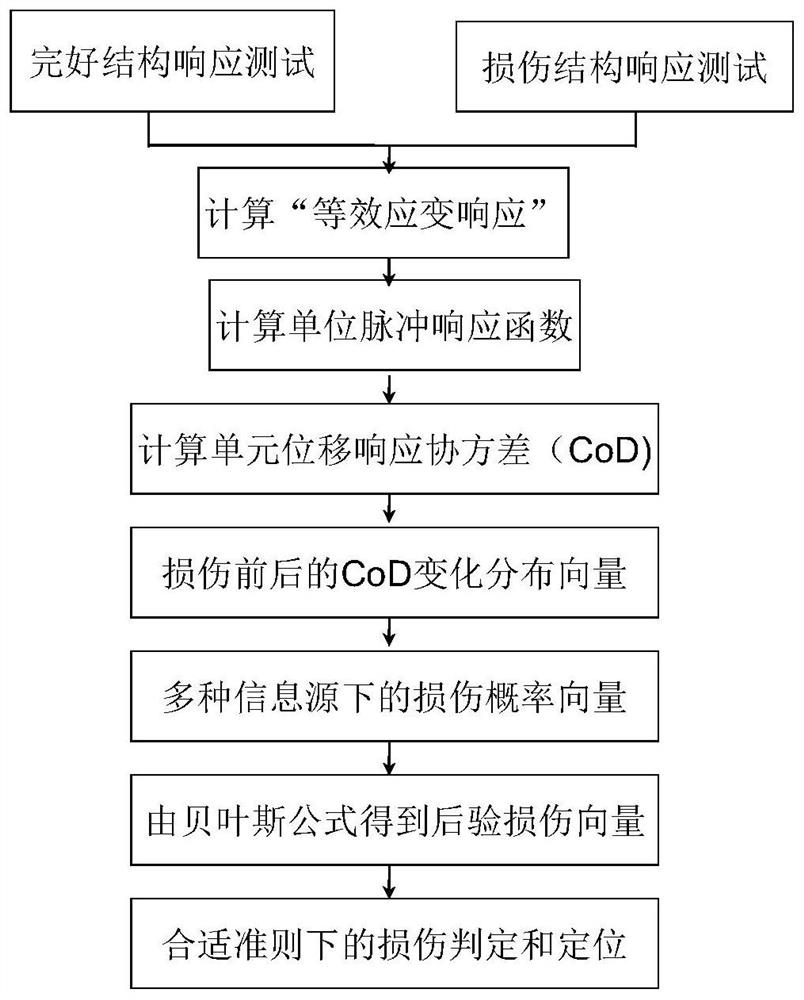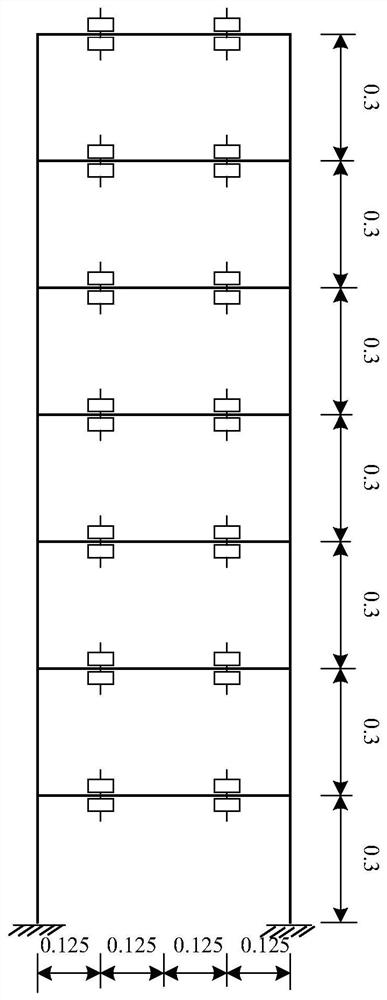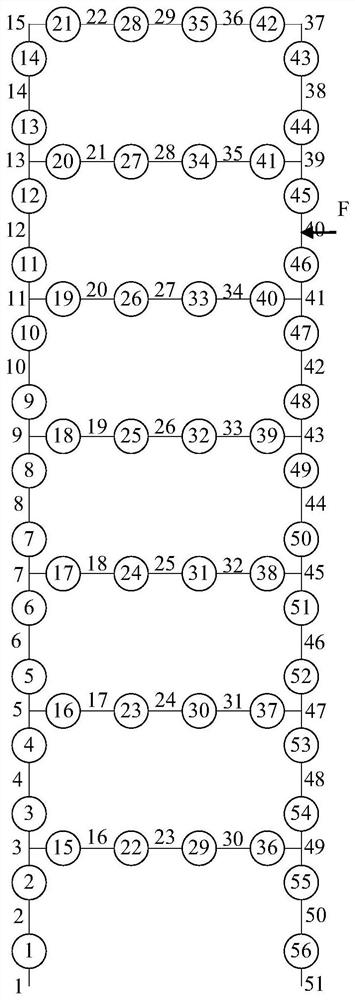Structural damage identification method based on displacement response covariance parameter and Bayesian fusion
A technology of displacement response and structural damage, applied in character and pattern recognition, instruments, design optimization/simulation, etc., can solve problems such as difficult damage identification methods, loss of high-order modes, loss of dense modes, etc., to achieve rapid processing and ensure safety Sex, the effect of high signal energy
- Summary
- Abstract
- Description
- Claims
- Application Information
AI Technical Summary
Problems solved by technology
Method used
Image
Examples
Embodiment 1
[0075] The main implementation process of the present invention for structural damage identification is as follows: figure 1 As shown, the specific steps of a structural damage identification method based on displacement response covariance parameters and Bayesian fusion are as follows:
[0076] T1. Arrange the acceleration sensor on the structure to test the acceleration response, perform secondary integration to obtain the displacement response, or arrange the displacement sensor to directly test the displacement response;
[0077] T2. Calculate the "equivalent strain response" of the element in the intact state and the damaged state;
[0078] T3. Calculate the unit impulse response function of the "equivalent strain response" of the unit in the intact state and the damaged state;
[0079] T4. Calculate the unit displacement response covariance parameters in the intact state and the damaged state;
[0080] T5. Obtain the change distribution vector of the unit displacement ...
Embodiment 2
[0094] For example Figure 6 The laboratory test simply supported steel beam shown is studied to further demonstrate the proposed damage identification method of the present invention.
[0095]The length of the steel beam is 1996 mm, the section is a rectangle with a length of 50.75 mm and a width of 9.69 mm, the Young's modulus is 191.1 GPa, and the density is 7790.6 kg / m 3 , The two ends of the steel beam are simply supported, and the span between the supports is 1920 mm. At the left side of the beam 158 mm from the right end of the beam, a gap of 9 mm in length, 9.69 mm in width, and 0.9 mm in depth was cut off on the upper and lower surfaces of the beam to create damage.
[0096] The specific implementation steps of structural damage identification are as follows:
[0097] (1) Seven acceleration sensors are installed on the lower surface of the beam at equal intervals, such as Figure 6 As shown, on the upper surface at a distance of 638mm from the right end of the beam,...
PUM
 Login to View More
Login to View More Abstract
Description
Claims
Application Information
 Login to View More
Login to View More - R&D
- Intellectual Property
- Life Sciences
- Materials
- Tech Scout
- Unparalleled Data Quality
- Higher Quality Content
- 60% Fewer Hallucinations
Browse by: Latest US Patents, China's latest patents, Technical Efficacy Thesaurus, Application Domain, Technology Topic, Popular Technical Reports.
© 2025 PatSnap. All rights reserved.Legal|Privacy policy|Modern Slavery Act Transparency Statement|Sitemap|About US| Contact US: help@patsnap.com



